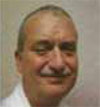OBG Management is blessed to have readers who are world-class clinical experts in obstetrics, gynecology, and women’s health. Thanks to your education, training, and experience, you are the women’s health experts of America, a unique resource.
We decided to tap into this resource by inviting members of our Virtual Board of Editors to offer a clinical pearl that has helped increase their efficacy or efficiency over the past year. The pearls contained in this article are well worth your time to read. (And we welcome your contributions, as well. Simply email them to obg@qhc.com, and we will publish a compilation in the future.)
As for my contribution, I have found the levonorgestrel-releasing intrauterine system (Mirena) to be invaluable in the provision of contraception and treatment of menorrhagia and pelvic pain, often averting the need for a surgical procedure. If it were more widely utilized—even in the face of a major price increase—it could reduce both the number of unintended pregnancies and hysterectomy procedures. As we become comfortable with the technique and clinical efficacy of this system, I expect utilization to increase significantly.
And now, we present eight other practice-enhancing pearls…. —Robert L. Barbieri, MD
1. Don’t underestimate the value of a phone call ($20,000, in one case)

Three-dimensional ultrasonography (US) is nice; fancy cystometrics are helpful; and electronic health records (EHR) may or may not reduce paperwork—but all of these technologies are expensive. In this era of plummeting reimbursement, the common telephone can help you pay the overhead.
Here’s an example: Mrs. Smith, a new patient, visited my office for a consultation about her difficulty in getting pregnant. It seems that my competitor in a nearby town had failed to telephone Mrs. Smith about her lab results, despite repeated attempts to obtain them on her part. His loss, my gain. I called her back multiple times to report lab values and coordinate the ovulation induction that ensued. She conceived, became an obstetric patient, and had a vaginal delivery. Laparoscopy followed several years later for pelvic pain. A second round of ovulation induction produced another pregnancy. She was pleased and always is pleasantly surprised when she gets a personal call from me. I consider it time well spent. And I estimate that, over the years I have managed this patient, she has brought at least $20,000 into my coffers.
A phone call is cheap, effective, and shows you care. Use your phone! You’re paying the monthly bill anyway! Make it work for you. It’s an asset, not a liability!
Dr. Franklin practices ObGyn in Lewisville, Tex.

Every summer, I hire a high school student to call every patient who has not been seen in the office over the past 13 to 36 months. I provide the student, who works for the minimum wage, with a script outlining different scenarios. The script includes inquiries about the patient’s current address and whether she wishes to be considered a patient of the practice. Most important, this script instructs the student to offer each patient an appointment.
Rather than waste time instructing the student how to schedule an appointment and enter the patient’s data, I have the employee simply transfer the call to an office scheduler when the patient wishes to make an appointment. This strategy has proved quite successful at generating office visits at minimal cost.
Dr. McGrath is Chief of Obstetrics and Gynecology at Baptist Medical Center Nassau in Fernandina Beach, Fla.

The one thing that has definitely made my life a little simpler is the transition from beepers and pagers to cell phones. Before this transition, I would get paged to a message. Then I would have to get to a phone and dial the number in the message. If I was in the car, this supposedly simple process was not so simple. And if the number was busy, that was another headache. Then I would have to start all over.
Now the message comes into my smart-phone as a text message with the callback number right there in the message. I click on it and, right then and there, I am connected to my patient!
For private practitioners out there who deal with emergency calls and patients in labor, the new technology is a life and time saver!
Dr. Zandieh practices ObGyn in Bethpage, NY.
2. Electronic health records are better for both physician and patient

Adoption of an EHR has made the biggest difference in my practice over the past year. The EHR is an electronic version of the patient record that includes documentation of the history and physical exam, progress notes, diagnoses, medications, laboratory and radiographic studies, US imaging, and immunizations. It has proved to be integral to the efficient and effective delivery of health care to my patients. Although my institution implemented the EHR in 2002, I have come to appreciate it more every year. Here are a few of the reasons:

